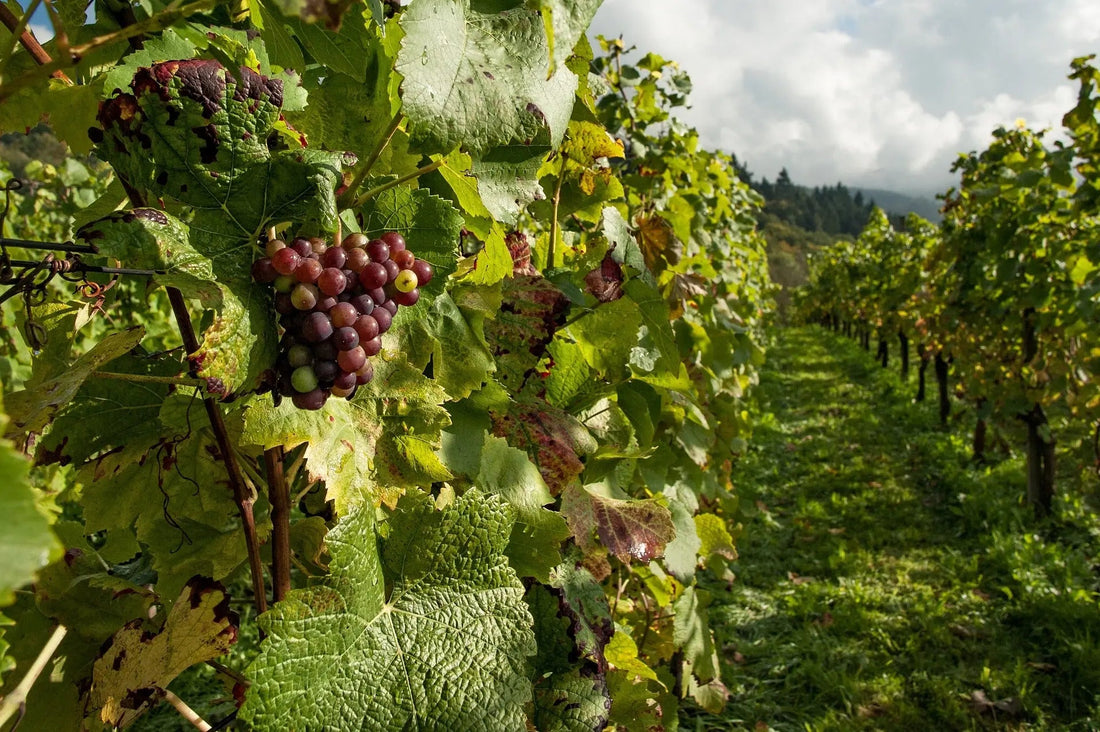
Distinctive Differences between Georgian Wines and Wines from the Rest of Europe
Nina BaidoshviliCompartir
Wines, products that encapsulate the history, climate and culture of a region in a bottle, are unique expressions of the land that produces them. In this analysis, we will explore the most notable differences between Georgian wines and European wines, two wine worlds that, despite sharing a love of wine, differ in production methods, grape varieties and winemaking philosophies.
Winemaking Methods: The Qvevri Tradition vs. Steel Tanks and Oak Barrels

In Europe, modern winemaking methods, such as fermentation in stainless steel tanks and aging in oak barrels, are common in most wine regions. These methods allow precise control over the winemaking process and can significantly influence the flavor profile of the wine. However, in Georgia, the Qvevri tradition prevails.
 The Qvevri is a clay jar buried in the ground that is used for the fermentation and storage of wine. This ancient method is an integral part of Georgian wine culture and has been used for millennia. Fermentation at Qvevri is a natural and non-interventional process, allowing the wine to develop its unique character and faithfully reflect the terroir of the vineyard. Additionally, the porosity of the clay allows for gentle microoxygenation, adding complexity to the wine.
The Qvevri is a clay jar buried in the ground that is used for the fermentation and storage of wine. This ancient method is an integral part of Georgian wine culture and has been used for millennia. Fermentation at Qvevri is a natural and non-interventional process, allowing the wine to develop its unique character and faithfully reflect the terroir of the vineyard. Additionally, the porosity of the clay allows for gentle microoxygenation, adding complexity to the wine. Native Grape Varieties: Diversity vs. Familiarity
Europe is known for its wide diversity of grape varieties, from Burgundy's Pinot Noir to Spain's Tempranillo. However, Georgia surprises with an impressive variety of native strains, many of which are unique to the region. Saperavi , a thick-skinned red grape that produces dark, robust wines, is a notable example. Its white counterpart, Rkatsiteli , is an ancient variety known for its fresh fruit notes and refreshing acidity, although it must be said that there are more than 500 varieties of grapes in Georgia.

The diversity of native grapes in Georgia reflects the country's rich wine history and its role as the cradle of viticulture . These varieties, many of which have been preserved over the centuries, bring a unique dimension to the global wine landscape and offer winemakers a wide range of options for making distinctive wines.
Wine Philosophy and Cultural Tradition: Respect for the Land and Ancestral Traditions
Winemaking in Georgia is imbued with a deep connection to the land and ancient traditions. Georgian producers maintain a wine philosophy rooted in respect for nature and sustainability. Many vineyards are grown using organic and biodynamic practices, minimizing the use of chemicals and promoting biodiversity.

Qvevris unearthed
Furthermore, the wine tradition is closely linked to Georgian culture and identity. Wine plays a central role in celebrations and rituals, from weddings to religious banquets. This cultural connection is reflected in the craftsmanship and passion that Georgian producers dedicate to each bottle of wine they produce.
Flavor Profile: Terroir and Tradition vs. Innovation and Established Standards
Georgian wines offer a distinctive flavor profile that sets them apart from their European counterparts. With its traditional winemaking methods and wide range of native grape varieties, Georgian wines tend to have an earthier and spicier character. Notes of pomegranate, dried apricot and aromatic herbs are common in many Georgian wines, providing a unique sensory experience for the consumer.
On the other hand, European wines can exhibit a greater diversity of styles and flavor profiles, reflecting the numerous wine regions and traditions across Europe. From the intense red wines of Bordeaux to the crisp white wines of Alsace, Europe offers a variety of options to satisfy the most demanding tastes.
Although Georgian wines and European wines have distinctive differences that make them unique, they also share several common elements due to their wine-growing nature and shared history of viticulture.
- Centennial Wine Tradition: Both in Georgia and the rest of Europe, wine production has a long history that goes back thousands of years. Both regions have developed deep-rooted wine traditions that have been passed down from generation to generation, leading to the creation of wines with cultural depth and unique character.
- Diversity of Styles and Varieties : There is a wide range of wine styles and grape varieties. From robust reds to delicate whites, and from indigenous to international varieties, both regions offer a rich diversity that satisfies a wide range of tastes and preferences.
- Innovation and Experimentation : Despite maintaining strong winemaking traditions, both Georgia and Europe have embraced innovation and experimentation in wine production. Winemakers in both regions are constantly seeking new techniques and methods to improve the quality of their wines, whether through introducing new grape varieties, adopting sustainable practices, or exploring new winemaking styles.
- Wine Culture : Both in Georgia and the rest of Europe, wine is more than just a drink; It is an integral part of the culture and identity of the region. Wine is enjoyed at family gatherings, religious celebrations, social and gastronomic events. In addition, symbolic and ceremonial meanings are attributed to it that reflect the cultural importance it has in society.
- Respect for Terroir : Both in Georgia and the rest of Europe, there is a deep respect for the concept of "terroir", which refers to the influence of the natural environment on the character and quality of wine. Producers in both regions understand the importance of soil, climate and topography in producing quality wines and work to preserve and highlight the unique characteristics of their terroir.

In short, despite the distinctive differences between Georgian wines and European wines, both share a rich winemaking history, a diversity of styles and varieties, a deep-rooted wine culture, a focus on quality and respect for terroir. . These similarities underscore the deep connection that exists between the world's diverse wine regions and the universality of the love of wine as an expression of the land and culture.
